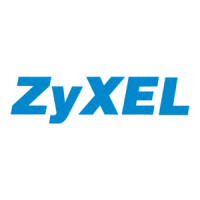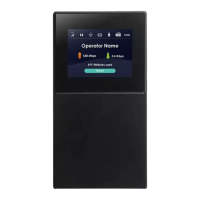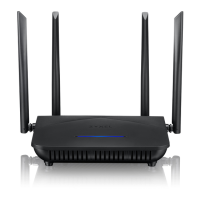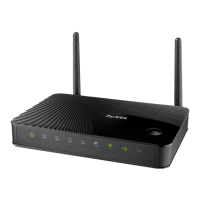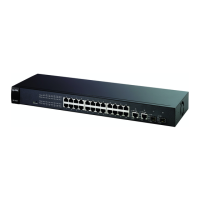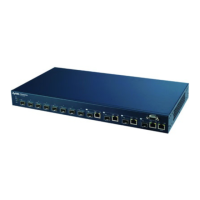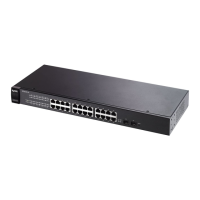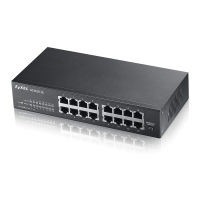Chapter 6 Connection Status
Nebula Mobile Router User’s Guide
98
EcNo This displays the ratio (in dB) of the received energy per chip and the interference level.
The measured EcNo is in 0.1 dB and is received in the downlink pilot channel. An undetectable
signal is indicated by the lower limit, example –240 dB.
This parameter is for UMTS only. The normal range is –30 to –240. The value is –240 if the Current
Access Technology is not UMTS or there is no network connection.
TAC This displays the Tracking Area Code (TAC), which is used to identify the country of a mobile
subscriber.
The physical cell ID of the connected E-UTRAN cell, is as specified in 3GPP-TS.36.101.
This parameter is for LTE only. The value is ‘0’ (zero) or ‘N/A’ if the Current Access Technology is
not LTE or there is no network connection.
LAC This displays the 2-octet Location Area Code (LAC), which is used to identify a location area
within a PLMN.
The LAC of the connected cell is as defined in SIB 1 [3GPP-TS.25.331]. The concatenation of
PLMN ID (MCC+MNC) and LAC uniquely identifies the LAI (Location Area ID) [3GPP-TS.23.003].
This parameter is for UMTS or GPRS. The value is ‘0’ (zero) if the Current Access Technology is not
UMTS or GPRS. The value is ‘N/A’ if there is no network connection.
RAC This displays the RAC (Routing Area Code), which is used in mobile network “packet domain
service” (PS) to identify a routing area within a location area.
In a mobile network, the Zyxel Device uses LAC (Location Area Code) to identify the
geographical location for the old 3G voice only service, and uses RAC to identify the location of
data service like HSDPA or LTE.
The RAC of the connected UTRAN cell is as defined in SIB 1 [3GPP-TS.25.331]. The concatenation
of PLMN ID (MCC+MNC), LAC, and RAC uniquely identifies the RAI (Routing Area ID) [3GPP-
TS.23.003].
This parameter is for UMTS or GPRS. The value is ‘0’ (zero) if the Current Access Technology is not
UMTS or GPRS. The value is ‘N/A’ if there is no network connection.
BSIC The Base Station Identity Code (BSIC), which is a code used in GSM to uniquely identify a base
station.
This parameter is for GPRS only. The value is ‘0’ (zero) if the Current Access Technology is not
GPRS. The value is ‘N/A’ if there is no network connection.
SINR This displays the Signal to Interference plus Noise Ratio (SINR) in dB. This is also a measure of signal
quality and used by the UE (User Equipment) to calculate the Channel Quality Indicator (CQI)
that it reports to the network. A negative value means more noise than signal.
CQI This displays the Channel Quality Indicator (CQI). It is an indicator carrying the information on
how good or bad the communication channel quality is.
MCS MCS stands for modulation coding scheme. The base station selects MCS based on current
radio conditions. The higher the MCS the more bits can be transmitted per time unit.
RI This displays the Rank Indication, one of the control information that a UE will report to eNodeB
(Evolved Node-B) on either PUCCH (Physical Uplink Control Channel) or PUSCH (Physical Uplink
Shared Channel) based on uplink scheduling.
PMI This displays the Precoding Matrix Indicator (PMI).
PMI is for transmission modes 4 (closed loop spatial multiplexing), 5 (multi-user MIMO), and 6
(closed loop spatial multiplexing using a single layer).
PMI determines how cellular data are encoded for the antennas to improve downlink rate.
SCC Information If the cellular service provider supports carrier aggregation (CA), then this section displays
statistics for the connection’s secondary component carriers (SCCs).
# This displays the ID of the SCC. Some cellular providers support two or more SCCs.
Table 21 Cellular Info: Detailed Information (continued)
LABEL DESCRIPTION
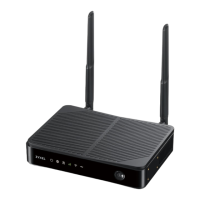
